The Nar Phu Valley with Thorong La Pass Trek is a captivating journey through the remote and rugged Himalayan landscape. Trekkers embark on an extraordinary adventure, navigating challenging high-altitude passes while seeing the rich Tibetan culture and history of the region. From ancient monasteries to diverse ecosystems, this trek offers a unique and unforgettable experience. As one treks across the stunning vistas of the Annapurna and Mustang ranges, they’ll discover the warm hospitality of local communities and gain a deeper understanding of the interplay between the natural environment and traditional ways of life. What awaits those who undertake this exceptional trek is a true adventure into the heart of the Himalayas.
Key Points
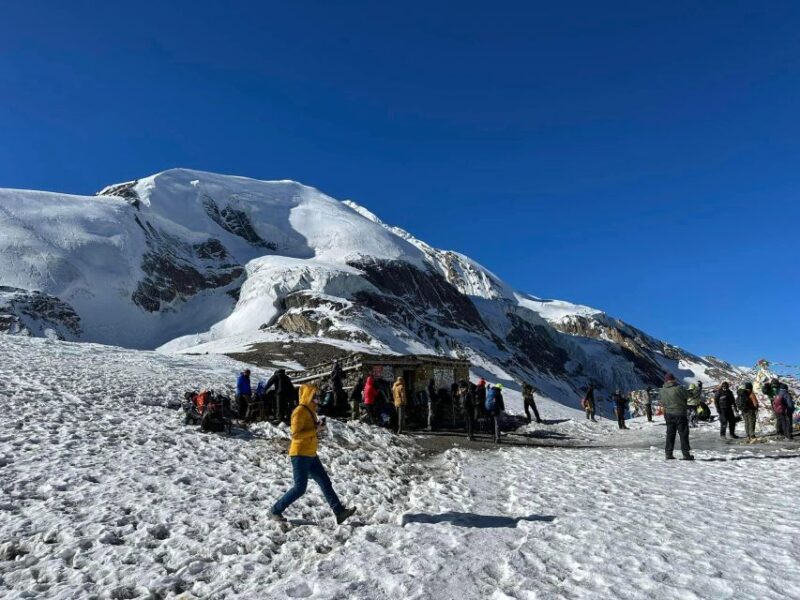
-
The 18-day Nar Phu Valley with Thorong La Pass trek offers a unique exploration of Tibetan-influenced culture and ancient monasteries in the Annapurna region of Nepal.
-
Trekkers experience breathtaking views of the Annapurna and Mustang ranges while crossing two high-altitude passes: Kang La (5,300m) and Thorong La (5,416m).
-
The trek showcases diverse landscapes, from high-altitude deserts to lush alpine forests, allowing for a comprehensive understanding of the region’s natural beauty.
-
Accommodation in traditional Tibetan-style teahouses and lodges provides an immersive cultural experience, with communal dining and basic yet comfortable facilities.
-
The trekking team, including an experienced guide, local porters, and a medic, ensures the safety and comfort of participants throughout the journey.
Highlights of the Trek
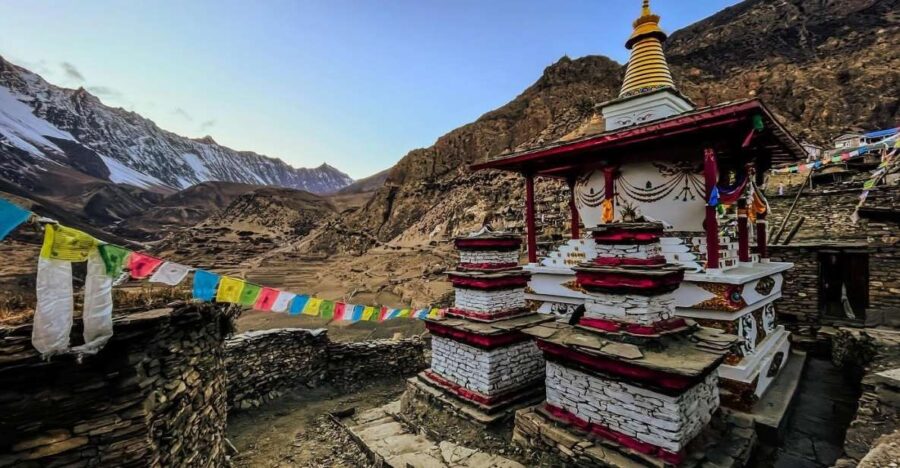
The Nar Phu Valley Trek offers several captivating highlights, including the opportunity to cross two high-altitude passes – the Kang La Pass at 5,300 meters and the renowned Thorong La Pass at 5,416 meters.
Trekkers will also explore the Nar and Phu Valleys, known for their Tibetan-influenced culture and ancient monasteries.
The trek features breathtaking views of the Annapurna and Mustang regions, showcasing the region’s diverse landscapes, from high-altitude deserts to lush alpine forests.
Adventurers can expect to encounter a rich cultural experience, with the chance to interact with the local communities and witness their age-old traditions.
Ready to hit more trails? More hiking adventures we feature in Tanki Manang
Detailed Itinerary Breakdown
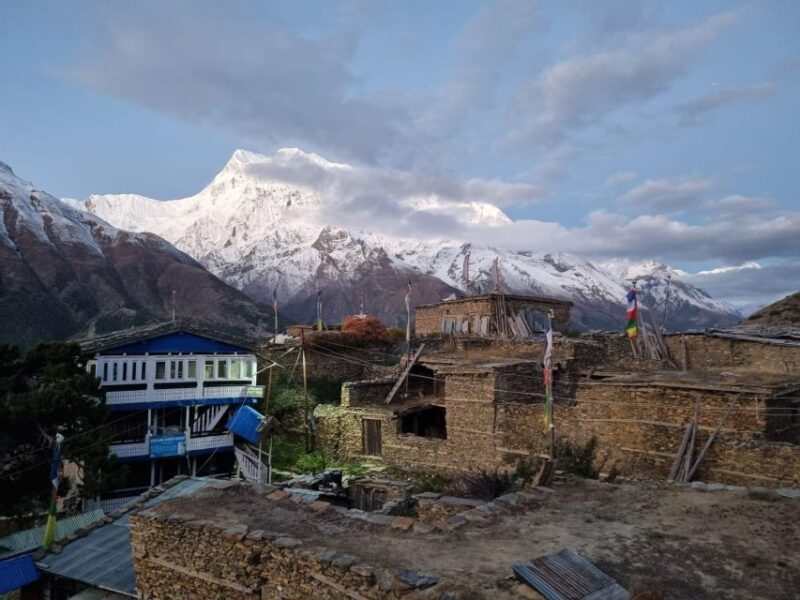
Let’s now explore the detailed itinerary breakdown of the Nar Phu Valley Trek. The 18-day journey begins with arrival in Kathmandu, where trekkers will transfer to their hotel and embark on a sightseeing tour of the city’s UNESCO World Heritage Sites to obtain their trekking permit.
The trek then takes them through diverse landscapes, from high-altitude deserts to lush alpine forests. Key highlights include:
-
Crossing the Kang La Pass (5,300m) and the iconic Thorong La Pass (5,416m)
-
Exploring the Tibetan-influenced Nar and Phu Valleys, home to ancient monasteries
-
Enjoying breathtaking views of the Annapurna and Mustang regions
-
Experiencing the stark contrast between high-altitude deserts and alpine forests
Accommodation and Meals
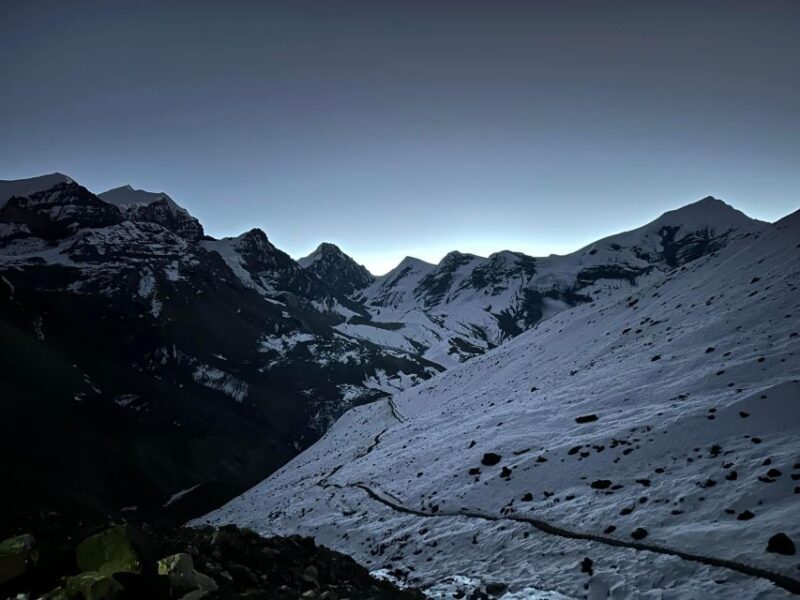
During the Nar Phu Valley Trek, trekkers will primarily stay in traditional Tibetan-style teahouses and lodges along the route.
These accommodations, while basic, provide a unique cultural experience and comfortable lodging amidst the stunning mountain scenery.
The teahouses offer simple dormitory-style rooms with shared bathroom facilities, where guests can experience the local way of living.
Meals are served in the communal dining areas, featuring a variety of Nepali and Tibetan-inspired dishes, such as dal bhat, momos, and thukpa.
While the menu may be limited, the fresh, locally-sourced ingredients ensure a tasty and satisfying dining experience.
Trekkers should be prepared for basic but authentic accommodations and meals throughout the Nar Phu Valley journey.
Transportation and Permits
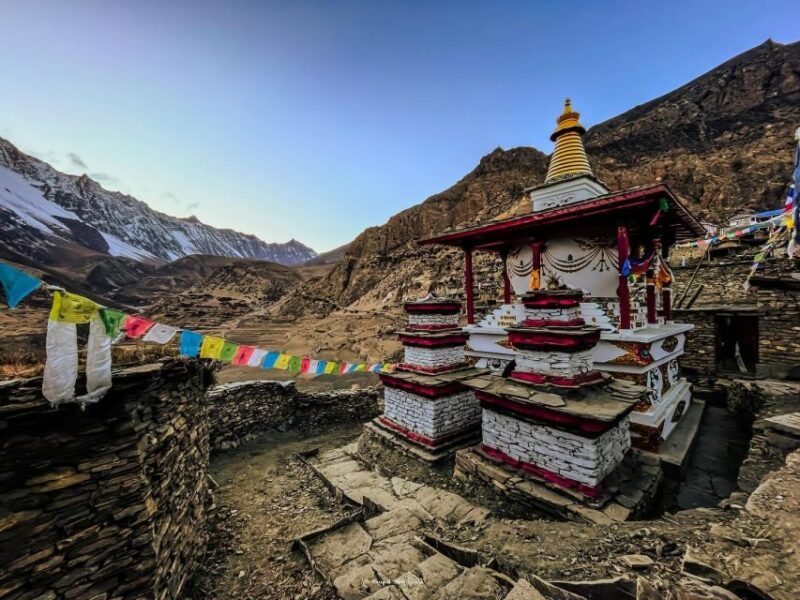
Reaching the remote Nar Phu Valley requires careful transportation planning and specialized trekking permits. Travelers access the trailhead by driving from Kathmandu to Syange or Jagat, a journey of approximately 8 hours.
Once on the trek, they must obtain permits from the Annapurna Conservation Area and a special permit for the Nar Phu region from the Nepal government.
The required permits include:
- Annapurna Conservation Area Permit
- TIMS (Trekkers’ Information Management System) card
- Special permit for the Nar Phu region
- Thorong La Pass permit
Securing these permits in advance is essential for a successful and legal trek through this protected and culturally significant area.
More Great Thing To Do NearbyTrekking Team and Support
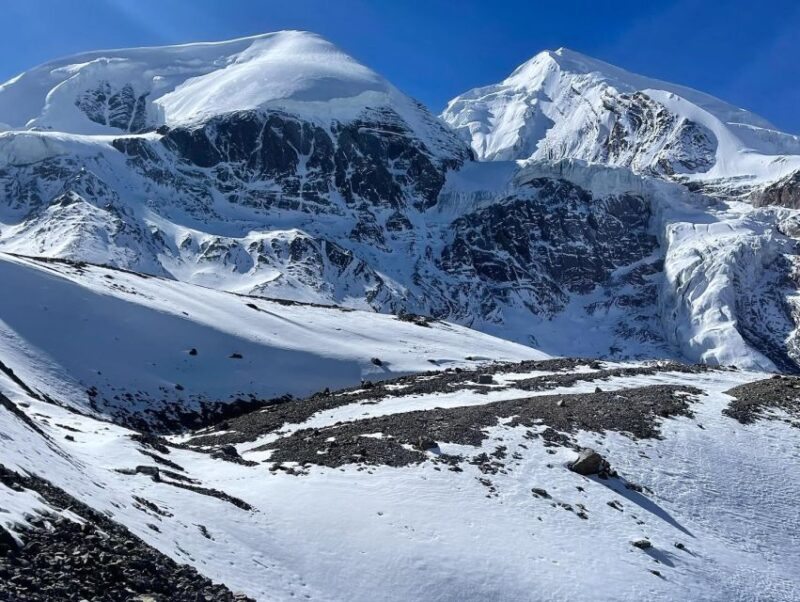
Along With securing the necessary permits, travelers on the Nar Phu Valley Trek benefit from an experienced trekking team that supports them throughout the journey. The team is led by an English-speaking guide with extensive knowledge of the region’s culture, history, and terrain. They are also accompanied by knowledgeable local porters who carry the group’s gear, ensuring a comfortable and efficient trek.
| Trekking Team | Responsibilities |
|---|---|
| Trek Leader | Guides the group, provides cultural insights, ensures safety |
| Local Porters | Carry group gear, provide logistical support |
| First Aid Medic | Administers emergency medical care if needed |
The trekking team’s expertise and dedication are essential in making the Nar Phu Valley Trek a truly unforgettable experience.
Packing and Gear Recommendations
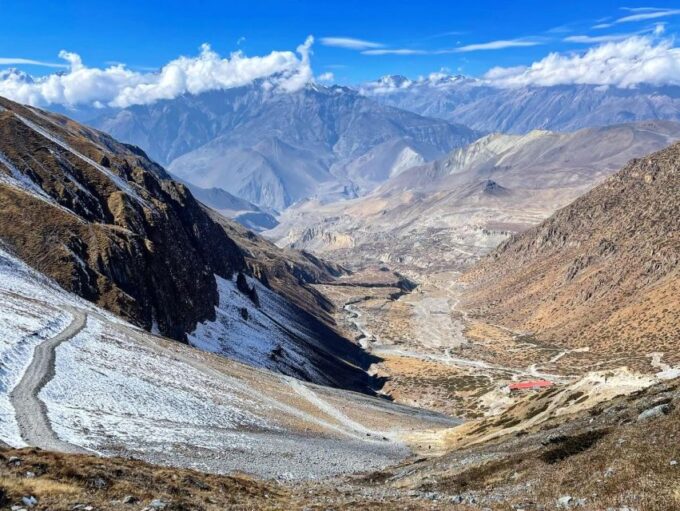
Packing the right gear is crucial for a successful and comfortable Nar Phu Valley Trek, as trekkers will encounter diverse terrain and weather conditions across the journey.
It’s important to pack layers, including lightweight, breathable clothing, warm insulation, and rain protection. Proper footwear, such as well-broken-in hiking boots, is essential for navigating the rugged trails.
Other essential items include:
-
Trekking poles for stability and to reduce strain on the knees
-
Water bottles and a water treatment system for hydration
-
Headlamp or flashlight for navigating at night
-
First-aid kit and personal medications
Health and Safety Considerations
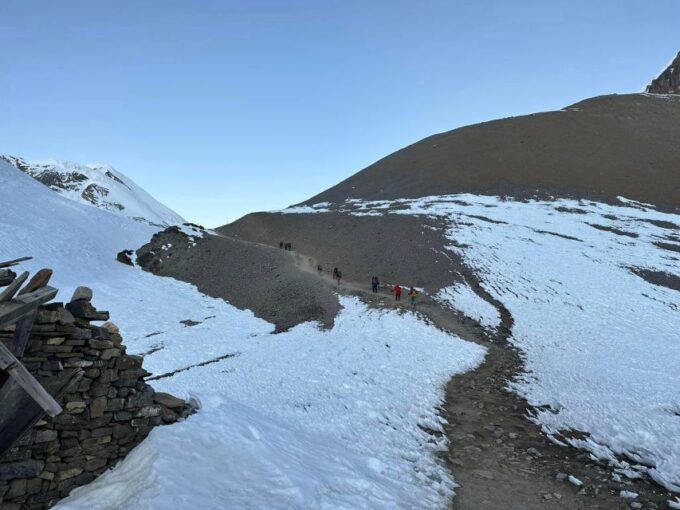
Trekking the Nar Phu Valley can present various health and safety challenges that trekkers must be prepared to address.
Altitude sickness is a primary concern, as the trek takes adventurers to elevations exceeding 5,400 meters. Careful acclimatization, hydration, and monitoring of symptoms are crucial to mitigate the risks of altitude-related illnesses.
Environmental hazards such as extreme weather conditions, unpredictable terrain, and wildlife encounters must also be anticipated. Proper gear, navigation skills, and emergency preparedness are essential.
Trekkers should also be aware of the limited medical facilities in remote areas and carry comprehensive travel insurance.
Unique Aspects of the Trek
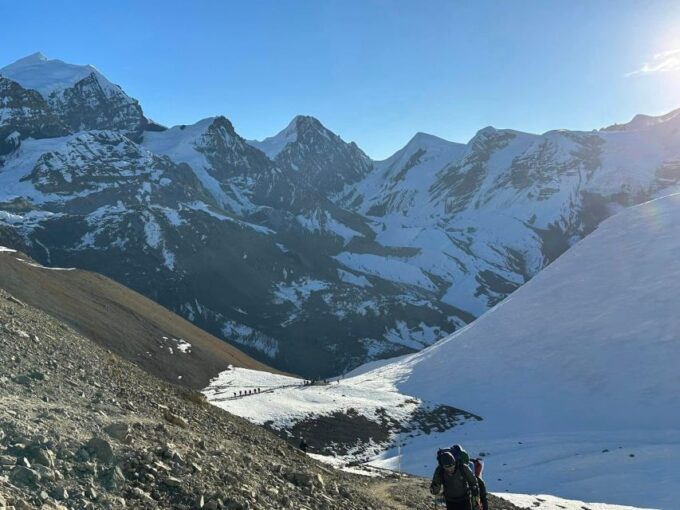
The Nar Phu Valley trek offers trekkers a rare glimpse into the Tibetan-influenced culture and traditions that have endured in this remote corner of Nepal.
Centuries-old monasteries, intricate mani walls, and vibrant festivals provide a captivating contrast to the rugged high-altitude terrain.
This trek is distinguished by several unique features:
-
Exploration of the Nar and Phu Valleys, known for their well-preserved Tibetan Buddhist heritage and ancient monasteries.
-
Crossing the challenging Kang La and Thorong La passes, which offer breathtaking panoramas of the Annapurna and Mustang ranges.
-
Encountering a diverse array of landscapes, from high-altitude deserts to lush alpine forests.
-
Interactions with local Tibetan-Buddhist communities, providing insights into their timeless way of life.
Frequently Asked Questions
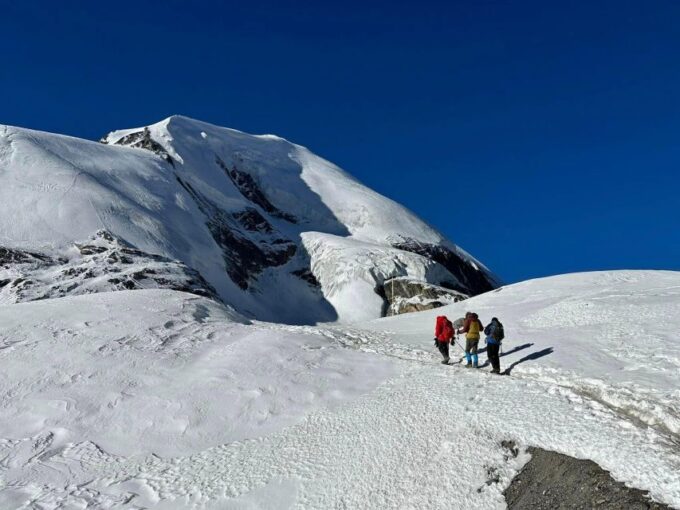
What Is the Best Time of Year to Do This Trek?
The best time of year to trek is typically during the spring (March-May) and autumn (September-November) seasons. These periods offer optimal weather conditions, including clear skies, moderate temperatures, and minimal precipitation, making for an enjoyable and safe trekking experience.
Are There Any Age Restrictions for This Trek?
There are generally no strict age restrictions for this type of high-altitude trek. However, it’s recommended that participants be physically fit and consult with a doctor before attempting the challenge, regardless of their age. The trek may not be suitable for very young children or those with health concerns.
Can I Extend or Shorten the Trek Duration?
You can typically extend or shorten the duration of a trek, subject to the operator’s flexibility and your physical capabilities. However, it’s crucial to discuss any adjustments with the trekking company to ensure a safe and enjoyable experience.
Is It Possible to Book as a Solo Trekker?
Yes, it’s possible to book this trek as a solo trekker. Many trekking companies offer solo trekking options, and participants are paired with other solo trekkers to form a group. Prices may vary slightly compared to group bookings.
Can I Rent or Purchase Gear Locally in Nepal?
Trekkers can easily rent or purchase gear locally in Nepal. Stores in Kathmandu and popular trekking hubs offer a wide range of quality equipment, including backpacks, sleeping bags, down jackets, and hiking boots, at affordable prices.
Recap
The Nar Phu Valley with Thorong La Pass Trek offers an unparalleled adventure through remote Himalayan landscapes, immersing trekkers in rich Tibetan culture and history.
Crossing the challenging Kang La and Thorong La passes, travelers are rewarded with breathtaking views of the Annapurna and Mustang regions.
Along the way, they’ll explore ancient monasteries, engage with local communities, and experience diverse ecosystems, all while enjoying the warmth of traditional Tibetan hospitality.
You can check if your dates are available here: